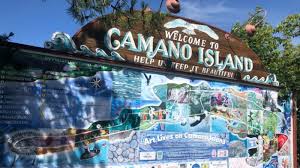Camano Island, located in Puget Sound between Whidbey Island and the mainland of Washington state, offers a rich tapestry of history and culture. This island, known for its scenic beauty, lush forests, and vibrant community, has a fascinating past and a thriving cultural scene. Camano Island in Washington continues to attract visitors and residents alike.
Early Inhabitants and Indigenous Culture of Camano Island in Washington
Long before European settlers arrived, Native American tribes inhabited Camano Island. Specifically, the Snohomish people called the island “Kabayno,” which means “land jutting into a bay.” They coexisted peacefully with the natural environment and depended on the abundant resources of the land and sea for their sustenance.
Moreover, they fished, hunted, and gathered shellfish, berries, and other wild foods, establishing a deep connection with the island’s ecosystem. Their legacy remains evident today, and many place names and cultural practices continue to reflect it.
European Exploration and Settlement
European exploration of the Pacific Northwest began in earnest in the late 18th century. Captain George Vancouver, a British officer of the Royal Navy, mapped the area in the 1790s. However, European settlers did not establish a presence on Camano Island until the mid-19th century.
The first European settlers set foot on the island in the 1850s. They were attracted by the island’s fertile land and abundant natural resources. Consequently, logging quickly became a significant industry. Vast stands of old-growth timber provided the raw materials for a booming lumber trade.
Development and Economic Growth
As the logging industry thrived, Camano Island saw significant development. Sawmills sprang up, and the island became an essential hub for timber production. The construction of the Stanwood-Camano Bridge in 1909 linked the island to the mainland, facilitating transportation and commerce. This bridge, along with improvements in ferry services, integrated Camano Island into the broader economy of the region.
Fishing also played an essential part in the island’s economy. Commercial fishing operations, along with canneries, provided employment and contributed to the island’s prosperity. Furthermore, the fertile land supported agriculture. Farms produced crops and raised livestock. As a result, these industries collectively shaped the economic landscape of Camano Island and supported its growing population.
Cultural Development and Artistic Community
Camano Island’s natural beauty has long attracted artists and creatives, who have fostered a vibrant cultural scene. The island is home to numerous galleries, studios, and arts organizations. For instance, the Camano Island Studio Tour, an annual event, displays the work of local artists and draws visitors from across the region. This event highlights the island’s artistic talent and strengthens the community. It brings people together to celebrate creativity.
In addition to visual arts, Camano Island boasts a rich musical and performing arts tradition. Local theaters, music venues, and community centers host many performances, ranging from concerts and plays to festivals and community gatherings. Consequently, these cultural activities enrich the lives of residents and provide opportunities for cultural exchange and expression.
Preservation of Natural and Historical Heritage
Preserving Camano Island’s natural and historical heritage is a priority for its residents. Numerous parks and nature reserves protect the island’s diverse ecosystems. These provide opportunities for outdoor recreation and environmental education. Camano Island State Park and Cama Beach State Park are two of the island’s most popular destinations.
They offer hiking, camping, boating, and wildlife viewing. These parks also feature historical exhibits. Furthermore, these educate visitors about the island’s past, including its Native American heritage and the logging industry’s impact.
Additionally, community organizations and historical societies work diligently to preserve and interpret the island’s history. The Camano Island Historical Society operates a museum that consists of artifacts, photographs, and documents that tell the story of the island’s development. Educational programs and events organized by these groups help to keep the island’s history alive and make it accessible to both residents and visitors.
Modern-Day Camano Island
Today, Camano Island in Washington is a thriving community that balances growth with a commitment to preserving its unique character. The island’s population has grown steadily. New residents are drawn by its organic beauty, recreational opportunities, and a keen sense of community. Despite this growth, Camano Island has retained its rural charm and relaxed pace of life.
Moreover, modern amenities and services have made the island more accessible and convenient. Initiatives to preserve its natural and cultural resources ensure that it remains a special place for future generations. Also, community events, farmers’ markets, and local festivals continue to strengthen the social fabric of the island. Consequently, these create a sense of belonging and shared purpose among its residents.
Conclusion
In conclusion, the rich history and culture of Camano Island in Washington are integral to its identity and appeal. From its early Native American inhabitants to its development as a logging and fishing hub, the island has a storied past, which continues to shape its present. Today, Camano Island is a vibrant community where history, culture, and natural beauty coexist harmoniously.
Also Read: Lawyer in Karachi

